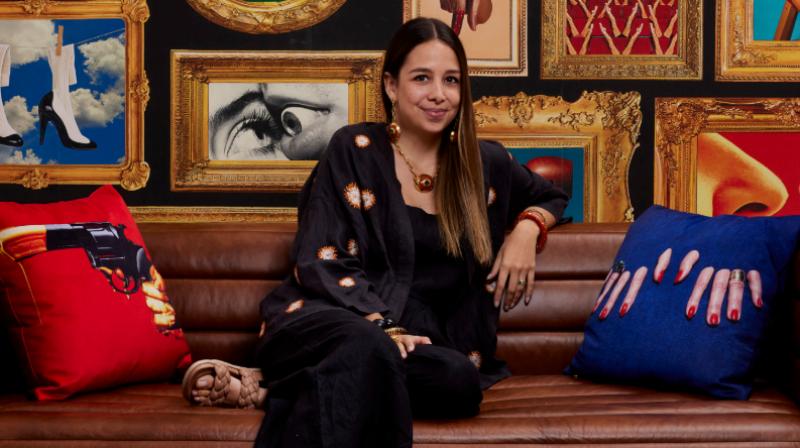Bianca Guimaraes, partner and executive creative director, Mischief, started her career in Brazil before moving to the USA 15 years ago. Guimaraes was among the jurors in the ‘Non-Traditional’ category at the London International Awards, during which Raahil Chopra caught up with her to learn more about her advertising journey, copying ideas, the birth of Mischief, and more...
Can you tell us a little bit about your journey in advertising so far?
I started my advertising career with a small agency (WG Comunicação) in Sao Paulo. I moved to a bigger one (Eugenio) which focused on the real estate category. It was only creating visuals which got me to be fast and good at art direction. However, I needed to go somewhere to achieve my career objective, which was to have a bigger impact on people’s lives.
I moved to New York 15 years ago and joined JWT, which sadly doesn’t exist anymore. I worked there for four and a half years. It’s where I did my first big piece of work which helped me get recognised. Then I joined BBDO – where I was for six years. As the pandemic began, we started Mischief about four years ago. Greg Hahn, the chief creative officer at BBDO New York at the time, got let go. He reached out to me three weeks later and stated how he wanted to start an agency. My partner Kevin (Mulroy) and a couple of others from BBDO joined him to start Mischief.
How has advertising changed over the last 17 years?
In a way, it hasn’t changed. It’s always going to be about the idea which comes with a strong, strategic foundation. No matter what it is, you need a good brief and strategy, and then a great way to tell that strategy. What has changed is the way we tell the story – the mediums. We have short form, long format, and different social platforms, AI and influencers. So the tools and means have evolved. It’s an exciting way to not only have more ways to tell the stories. But this also brings out challenges. I’m a big fan of following ‘no day is like another’ and I’m looking to face new problems.
We have seen a few campaigns created by Mischief - they have a common theme of being quirky and humorous. Has that always been your style of work, even at previous agencies?
Kevin, Greg and I have one thing in common – we wanted to build a place that didn’t have one style. If one looks at our bodies of work separately as creatives, before we started Mischief it was a lot of tonal whiplash. If you looked at my work – one piece would make you cry, and one could be labelled dumb and stupid. So all the work had different tonality. That’s something we are proud of – not having a style.
When we started Mischief we wanted to have the same style. Even though the brand acts here are bolder, they get a lot of pick-ups so people think that Mischief does that kind of work. But we also do big campaigns and films and serious stuff that’s more emotional.
This year the focus has turned to humour at big awards festivals. So is that something you try pushing more to the client?
It’s about what’s right for the brand strategically. If the brand doesn’t have a voice, we should discuss what it should be. Comedy is a great way to capture a person’s attention and break through the clutter. It is powerful. But it makes sense only for some brands. For instance, we work with MGM Luxury and we don’t push a comedy spot for them because that’s not what they want to be and it doesn’t make sense for their brand. We only try to do it when we think it’s the right way to push the problem.
Having said that – online fraud is something that’s increasingly becoming an issue and is a serious matter.
You used humour to address that issue for Cash App. How did that come about?
From the beginning itself, the client agreed to an approach that didn’t need to be serious. We thought that there are so many pieces of work when it comes to social good or corporate social responsibility that are serious and heavy. We thought it was a good tone to grab people’s attention and was based on real insight. It was a good, smart solution.
What’s your take on an idea being used in different parts of the world? For instance, what Mischief created for Cash App could be used in India for a different brand because it’s a problem here too...
Everything is a copy of something so it’s okay for ideas to be used in different parts of the world. It’s important to make sure that the problem is contextually there too. I am a competitive person but at the same time, I am comfortable with what I have created so it won’t threaten me if I see someone using it to solve problems in different markets.
There was an idea we worked on in Brazil and then at the same time, someone else came up with it in a different part of the world. It’s flattering to see that someone has used the idea because they thought it was so great.
We have come up with ideas for clients and then realised they have existed in other parts of the world. We killed the idea even though it was a complete coincidence. If the idea is being used to compete in award shows, then it should not be used. But, if it’s to solve genuine business or consumer issues, why not use it?
Read the full chat in the November issue of Manifest. Get your copy here.













